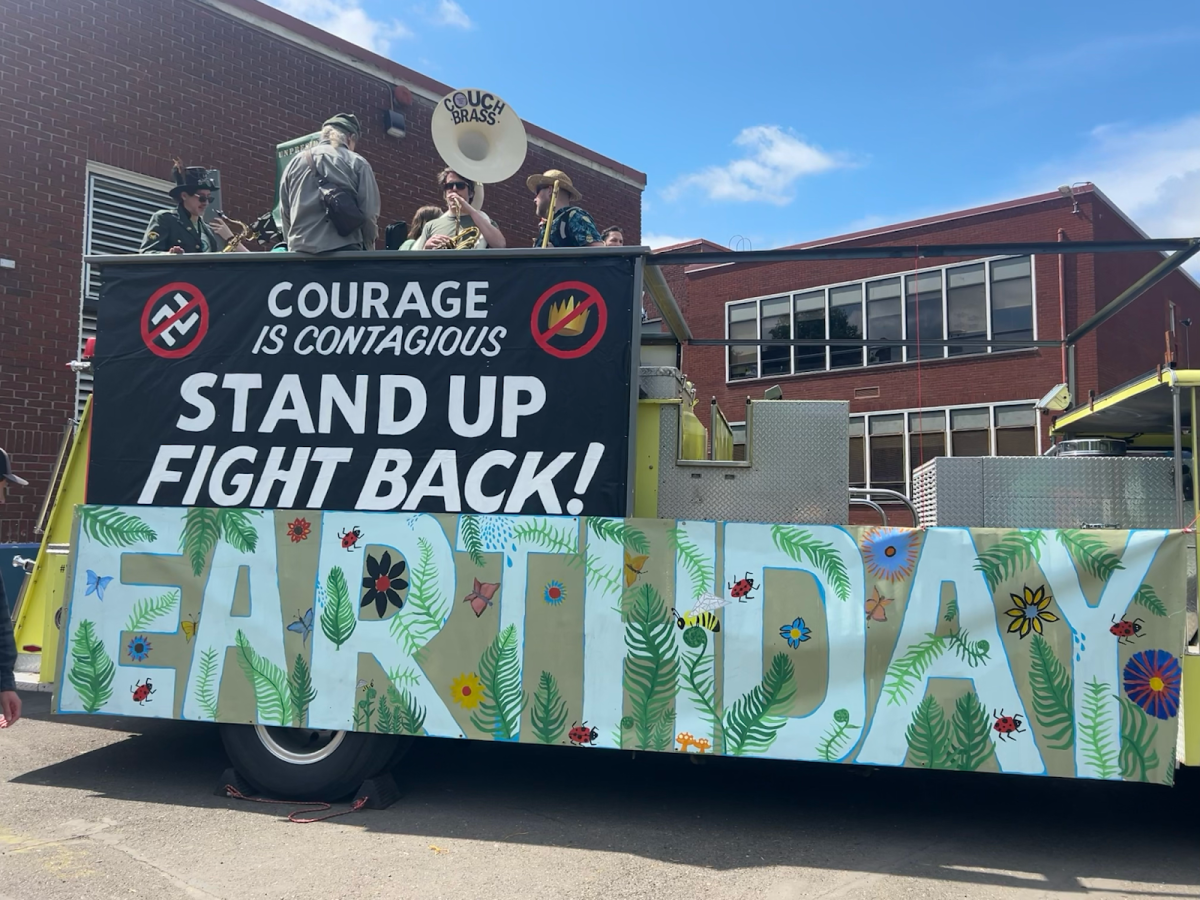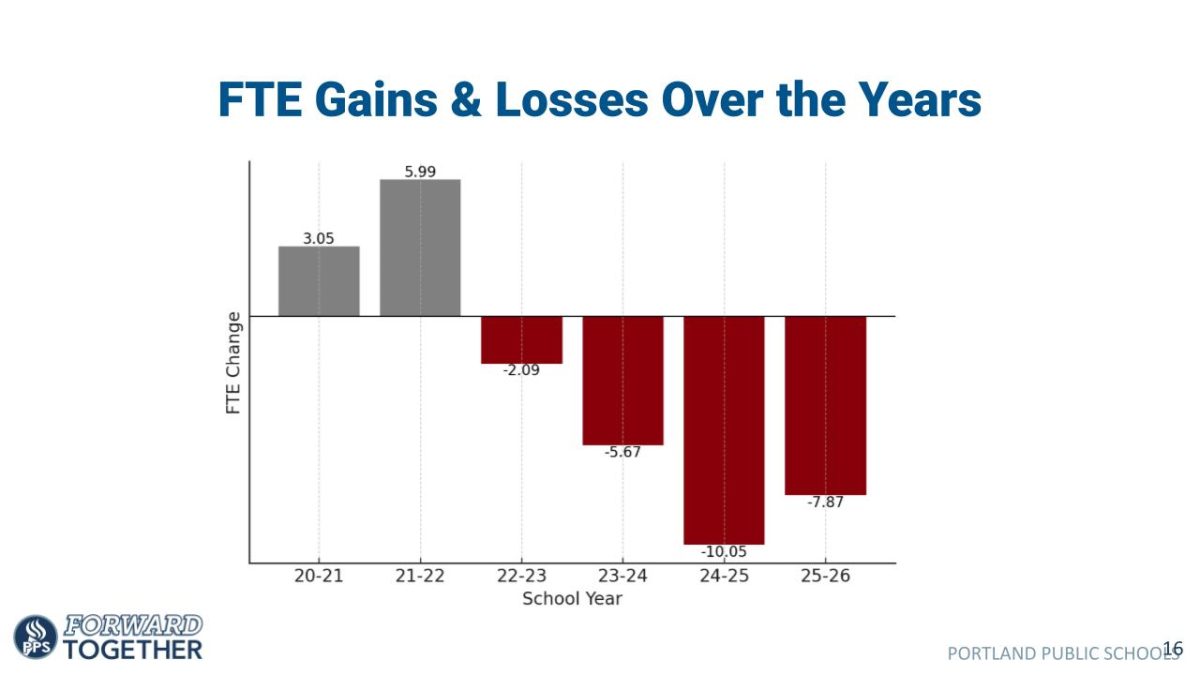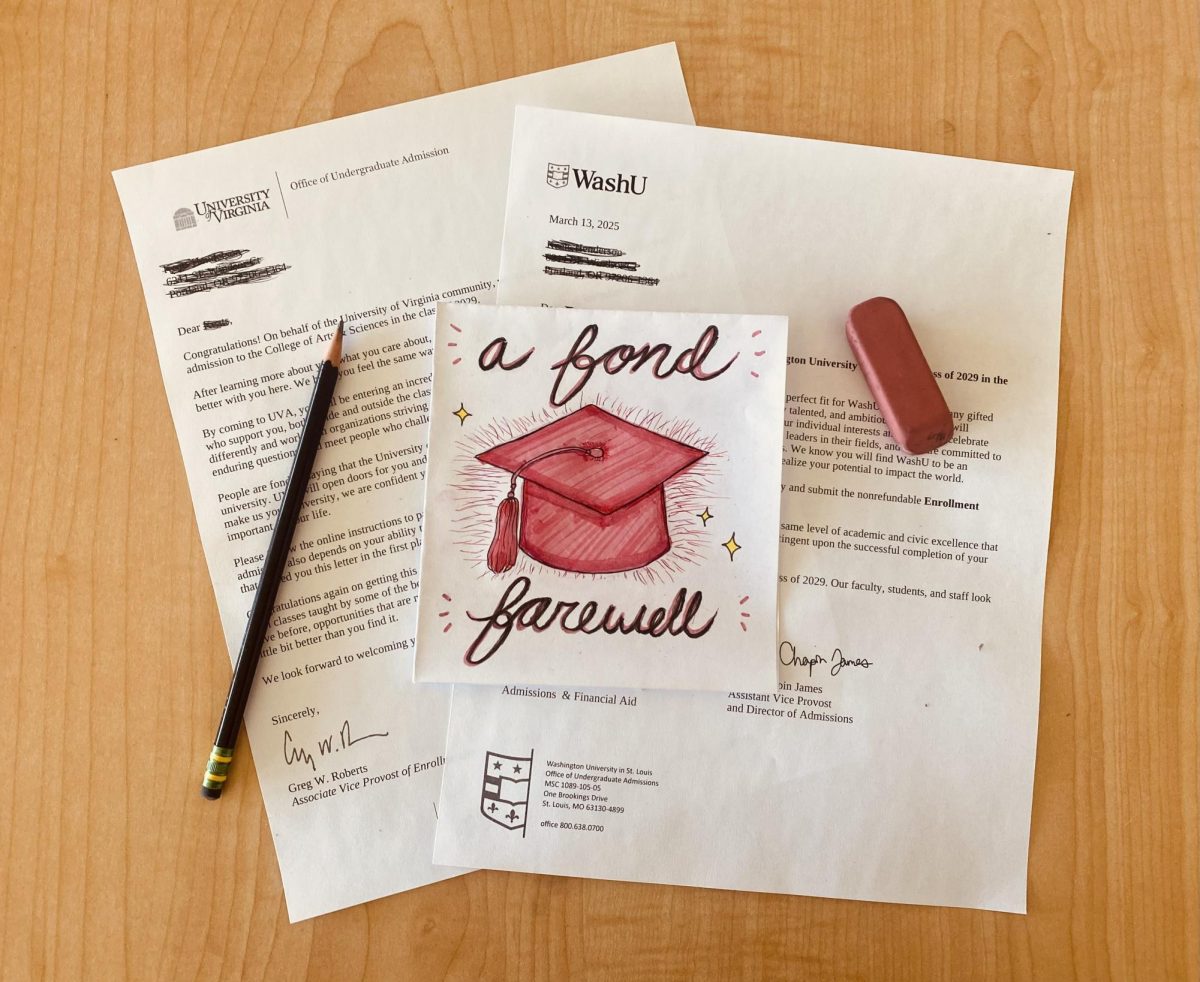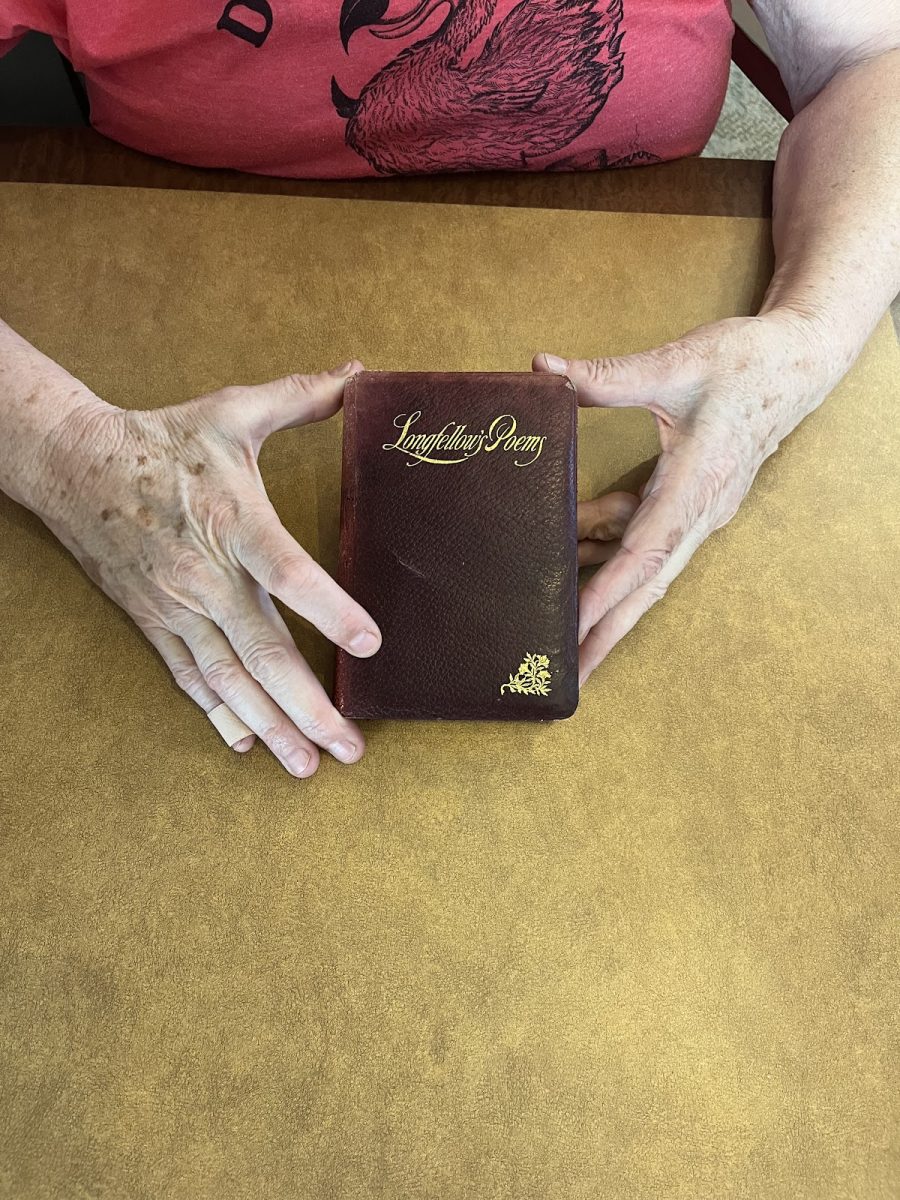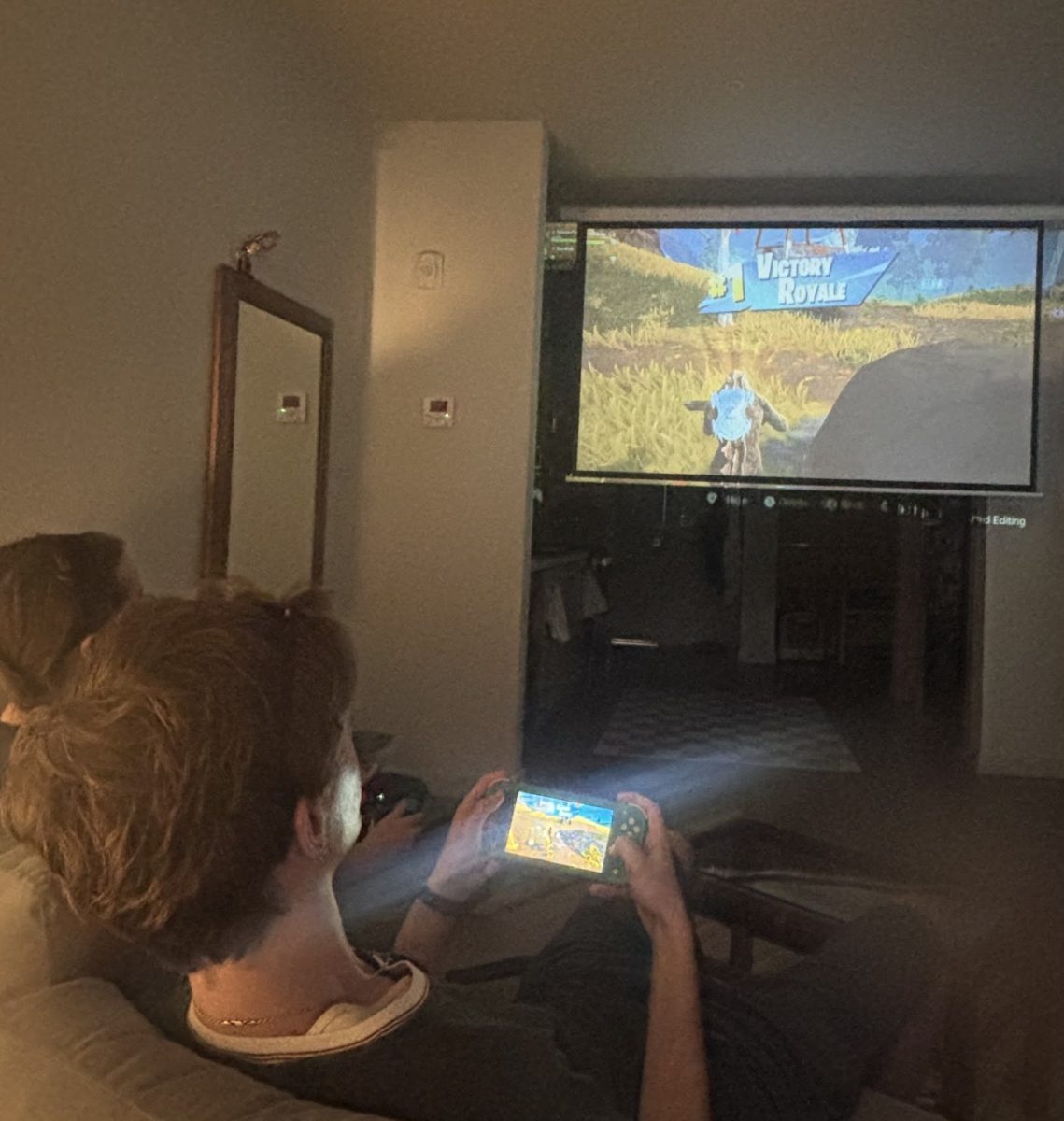An illustration of David Bowie performing on TV show “TopPop” in The Netherlands in 1974, during his Ziggy Stardust era. The image depicts the artist’s sense of fashion and individuality in the spotlight. Illustration by Lula Hugo
“Rumors and questions have arisen, such as who is he, what is he, where did he come from? Is he a preacher of a foreign power? Is he a creep? Is he dangerous? Is he smart, dumb, nice to his parents, real or put on, crazy, sane, man, woman, robot? What is this? Ladies and gentlemen, David Bowie!” says an early 1970s recording of American TV personality Dick Cavett’s voice, before a wave of applause overwhelms him.
Calling all lovers of glam rock, sequins, metallic eyeshadow, and expressionism. Earlier this September, a two hour and 14 minute film documentary directed by Brett Morgan was released, chronicling the life and legacy of famous artist, actor, and rockstar David Bowie. “Moonage Daydream” is christened after the artist’s 1971 song of the same name. The film utilizes unseen footage, audio, and artwork from the Bowie Estate, to which Morgan was granted unprecedented access in order to create this piece. These elements are beautifully meshed with recordings of live performances, as well as narration consisting almost entirely of Bowie’s own voice, and words from TV interviews throughout his 54-year career.
As striking visuals dance across the screen, Bowie discusses his philosophies in life and self-reflections through the various art forms he practiced. The film will have the viewer’s senses fully whelmed, enveloping them into the story of a life loudly-lived. Being openly bisexual in the 1970s, as well as having an interracial marriage to Somali-American supermodel Iman Abdulmajid in the 1990s (yes, this was a big deal even in the 90s) set Bowie apart from many other rockstars because he showed time and time again that he was willing to be taboo if it meant fulfillment of his artistic vision and ultimately, his happiness.
Several quotes used in the documentary were from a 1973 interview with Russel Harty, on his show “Russell Harty Plus Pop” for the British broadcast television network ITV, for which Bowie wore a single large dangly earring and platform sandals. Harty seems perplexed by his self-expression, and after asking Bowie about his spiritual beliefs he asks,
“And how about the shoes? Are they men’s shoes, or women’s shoes, or bisexual shoes?”
And Bowie replies, “They’re shoe-shoes, silly!”
Although the shoes themselves were not “bisexual shoes” (whatever that means), as previously mentioned, Bowie was openly Queer and had a very fluid gender expression, often sporting looks that were very outwardly feminine—even drag at one point—which seemed to inspire and excite his audience.
For many people, David Bowie was a catalyst for expressing their own sexuality and gender expression. There are several clips in the documentary of fans being interviewed outside of shows, some dressed like Bowie in androgynous clothing and bold makeup, talking about (and often yelling and/or screaming) their admiration for the musician.
In one clip, three unidentified concert-goers are asked “what excites [them]?” about David Bowie and they respond accordingly:
“His style!”
“I like his makeup.”
“I like his music.”
And just like that, there is something embedded within the film for everyone and anyone who appreciates his creative endeavors. Sitting there in the theater with surround-sound narration about Bowie’s innermost thoughts and stunning footage of past performances grants the viewer intimacy with the fantastical life of an icon.
In the previously mentioned 1973 Russell Harty interview, Harty pries into Bowie’s religious beliefs, question after question, finally asking,
“Do you indulge in any kind of worship?”
And Bowie gracefully responds, “Life. I love life very much indeed.”
The artist did all that he could to live a full and meaningful life, whether it be as Major Tom, Ziggy Stardust, the Thin White Duke, or the Blind Prophet. He emphasized that he was a writer and artist first, and a musician second; his personas allowed him to entertain. Self-experimentation kept his art alive and his fans spellbound. He was recorded as saying that he would live his life over again if given the chance.
For any David Bowie fan, or even someone curious about his art and impact, I would deeply recommend “Moonage Daydream” to experience a documentary like never before, and witness Bowie’s own “Sound and Vision.”
P.S. There is a scene in which one of his songs is played to “Ratatouille”-esque visuals and it is worth it even for that.


